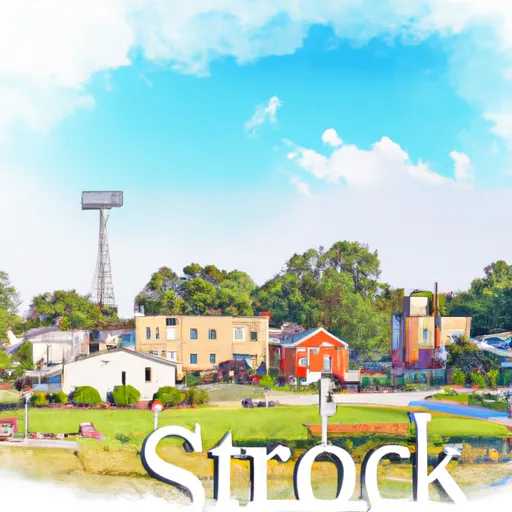-
 Snoflo Premium
Snoflo Premium
Get unlimited access to all our content
With no Ad interruptions! - Start Your Free Trial Login with existing account
Stockland
Eden Index
Climate
8.0
•
Recreation
1.4
•
Community
•
Safeguard
3.7/10

Stockland is a small village located in Iroquois County, Illinois. The climate in Stockland is characterized by warm summers and cold winters, typical of the Midwest region. Summers are typically mild to hot, with temperatures reaching into the high 80s Fahrenheit. Winters can be quite cold, with temperatures dropping below freezing and occasional snowfall.
Hydrologically, the area is influenced by the presence of Sugar Creek, which flows through Stockland. This waterway not only enhances the scenic beauty of the village but also provides an opportunity for outdoor activities such as fishing, canoeing, and kayaking.
In terms of outdoor recreation, Stockland offers various opportunities for nature enthusiasts. The surrounding area is predominantly rural, with open fields and woodlands, providing ample space for hiking, bird watching, and wildlife spotting. Additionally, the presence of Sugar Creek allows for pleasant walks along its banks or picnicking near its tranquil waters.
Overall, Stockland, Illinois, offers a charming rural setting with a diverse range of outdoor recreational activities, making it an attractive destination for nature lovers and those seeking a peaceful retreat.
What is the Eden Index?
The Snoflo Eden Index serves as a comprehensive rating system for regions, evaluating their desirability through a holistic assessment of climate health, outdoor recreation opportunities, and natural disaster risk, acknowledging the profound impact of these factors on livability and well-being.
Climate Health Indicator (CHI): 8.0
Stockland receives approximately
972mm of rain per year,
with humidity levels near 81%
and air temperatures averaging around
11°C.
Stockland has a plant hardyness factor of
5, meaning
plants and agriculture in this region thrive during a short period during spring and early summer. Most
plants will die off during the colder winter months.
By considering the ideal temperature range, reliable water supplies, clean air, and stable seasonal rain or snowpacks, the Climate Health Indicator (CHI) underscores the significance of a healthy climate as the foundation for quality living.
A healthy climate is paramount for ensuring a high quality of life and livability in a region, fostering both physical well-being and environmental harmony. This can be characterized by ideal temperatures, reliable access to water supplies, clean air, and consistent seasonal rain or snowpacks.
Weather Forecast
Streamflow Conditions
Upper Illinois
Area Rivers
Upper Illinois
Snowpack Depths
Upper Illinois
Reservoir Storage Capacity
Upper Illinois
Groundwater Levels
Recreational Opportunity Index (ROI): 1.4
The Recreational Opportunity Index (ROI) recognizes the value of outdoor recreational options, such as parks, hiking trails, camping sites, and fishing spots, while acknowledging that climate plays a pivotal role in ensuring the comfort and consistency of these experiences.
Access to outdoor recreational opportunities, encompassing activities such as parks, hiking, camping, and fishing, is crucial for overall well-being, and the climate plays a pivotal role in enabling and enhancing these experiences, ensuring that individuals can engage in nature-based activities comfortably and consistently.
Camping Areas
| Campground | Campsites | Reservations | Toilets | Showers | Elevation |
|---|---|---|---|---|---|
| Ouabache Trails County Park | 45 | 446 ft | |||
| Meriwether Lewis | 32 | 963 ft | |||
| Sullivan County Park | 450 | 520 ft | |||
| Lincoln Trail | None | 412 ft | |||
| Robinson City Park | None | 541 ft | |||
| Cayuga Park Campground | 29 | 509 ft | |||
| Lincoln Trail State Park | 240 | 655 ft | |||
| Destiny Parks Military - Fort Campbell | None | 544 ft | |||
| Paris City Park | None | 668 ft | |||
| Kimmell City Park | 10 | 415 ft |
Nearby Ski Areas
Catastrophe Safeguard Index (CSI):
The Catastrophe Safeguard Index (CSI) recognizes that natural disaster risk, encompassing floods, fires, hurricanes, and tornadoes, can drastically affect safety and the overall appeal of an area.
The level of natural disaster risk in a region significantly affects safety and the overall livability, with climate change amplifying these risks by potentially increasing the frequency and intensity of events like floods, fires, hurricanes, and tornadoes, thereby posing substantial challenges to community resilience and well-being.
Community Resilience Indicator (CRI):
The Community Resilience Indicator (CRI) recognizes that education, healthcare, and socioeconomics are crucial to the well-being of a region. The CRI acknowledges the profound impact of these elements on residents' overall quality of life. By evaluating educational resources, healthcare accessibility, and economic inclusivity, the index captures the essential aspects that contribute to a thriving community, fostering resident satisfaction, equity, and social cohesion.

